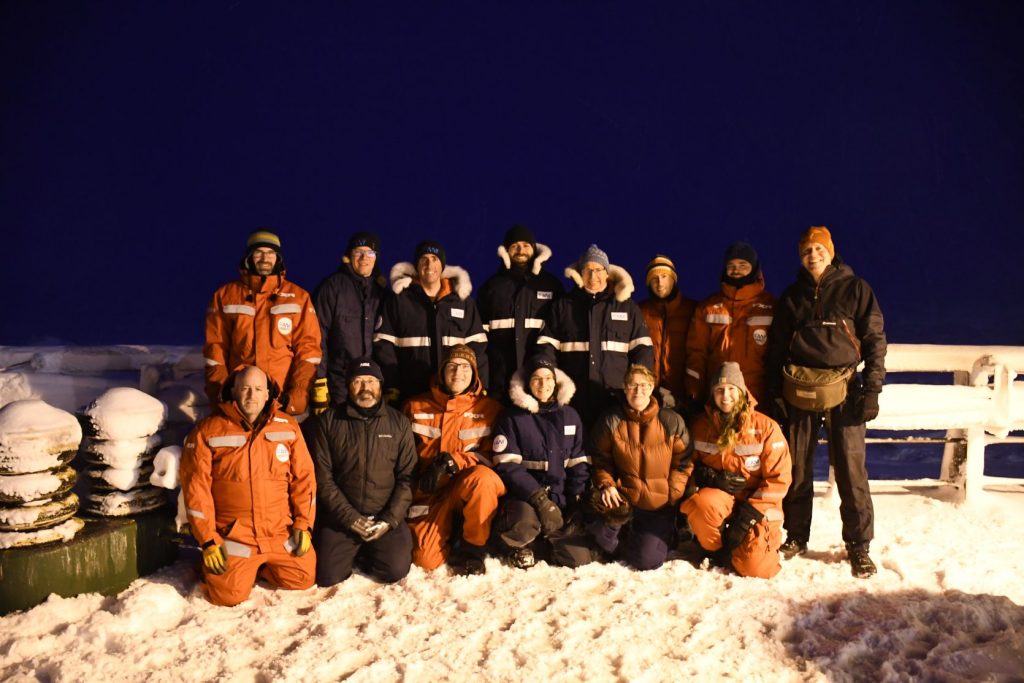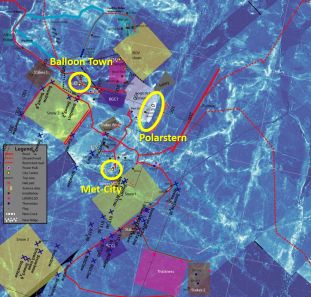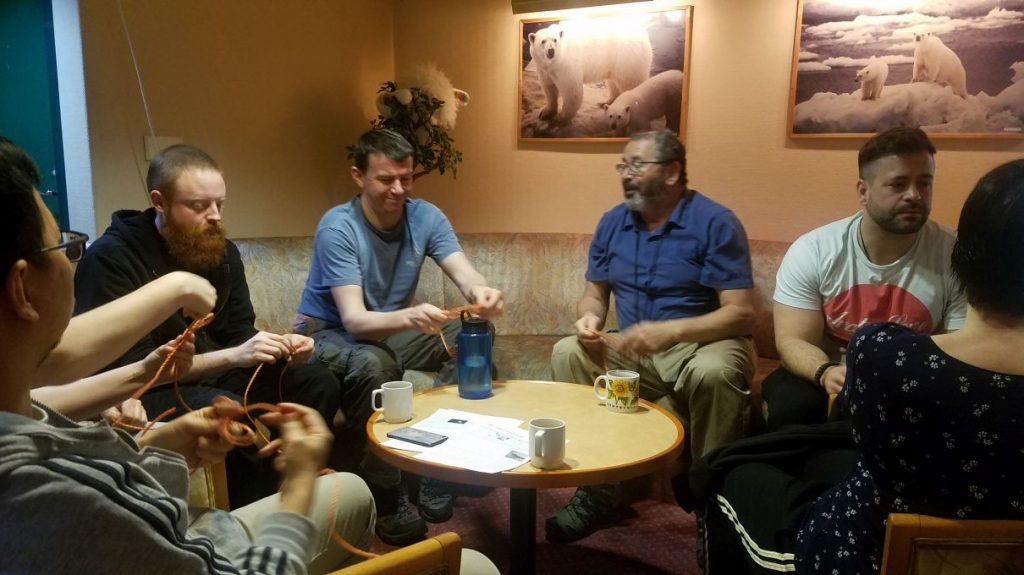Current Position: 87.1 °N, 89.23 °E
That’s a question that I get asked a lot. Now it has been almost three and a half weeks that we spent on the Kapitan Dranitsyn traveling from Tromsö to Polarstern. Short answer first: there is a lot to do.
The transit is the perfect time for team building, all kinds of refresher courses, getting organized, developing weekly work plans, taking a bit of a rest before the intense time on the ice floe, and of course the many things everyone has on their to do lists.
The way MOSAiC is set up is that we work in 6 thematic teams: atmosphere, ice/snow, ocean, biogeochemistry, ecology and logistics. Each team is responsible for keeping up the core science program and for conducting specific project-related work. During our transit period, it is my job as the ATMOS leader to build the team for leg 3, and to organize the handover with the previous and following legs to ensure a smooth continuation of the activities.

Since we are a fairly large group, the only suitable room on the ship is the cinema which somehow reminds us of a lecture hall. For the beginning of the group-forming phase this is actually quite fitting. We focused on understanding the research objectives and methods of each project to discover where we can connect at the scientific level. This is a very enjoyable exercise because we all get insights into different atmospheric topics, and it almost feels like sitting in class again.
After we passed that stage, the next step was to get organized in operational terms. This is not as straight forward as one might imagine. We are only a limited number of people with long to do lists and activities that happen in very different places on the ship, in the central observatory – that is the ice floe, which the ship is moored against – and further away. In the Arctic, work outside the ship can only happen with a bear guard. This means that each team on the ice needs to provide their own bear guard. While we all have training to do that, it means that the person guarding will not do any science at the same time. So we need to organize joint time on the floe with rotating schemes of guarding. Our main work places outdoors are Met-City, Balloon-Town, and the Snow areas, wherever a new lead opens and of course the ship where no guard is needed (see map). Essentially this means we need to agree on a weekly schedule between all projects and help each other.

Now that we were clear on how to operate as a team, it was time to think about the handover activities. This is an exercise that involves going through different scenarios. The ideal case would give us five or more days with the Kapitan Dranitsyn and Polarstern alongside so each person can spend time with their counterpart while also helping to shuffle cargo. The worst case scenario is a handover with basically no time due to weather and ice conditions. This means that we need to be very strict with identifying priority handover activities. What makes the process even more interesting is that of course not only we as the transiting group plan the handover, but also the current leg 2 people on the ship. Since communication between the ships is very limited, it all comes down to very simple tables and hopefully unambiguous pieces of information to reach a consensus on the best strategy. Interestingly this worked out very straight forward for our team.
We also established a seminar series on the research happening in each team (atmosphere, ocean, snow/ice, biogeochemistry and ecology). For more than a week, no matter what weekday, 4:30 pm in the cinema was the place to be. The presentations sparked a number of discussions which we carried further in break out groups. Some of those were on specific scientific themes like the sulfur cycle, others were more practically oriented towards air space management given that helicopters, tethered balloons and UAVs will fly around. In addition to that, we needed to get an introduction into the data management system for MOSAiC to be able to enter our data and meta data efficiently into the central storage system once on Polarstern.

The logistics team did a number of seminars and practical exercises, training us for the art of bear guarding, radio communications, making useful knots, dressing appropriately in very cold and windy conditions, and how to move and dance to keep warm. Others came up with additional challenges, such as “beat the Dranitsyn” where we sum up our kilometers run on the treadmill and compare them with the distance that our transit ship made. The treadmill was leading yesterday. There is an after lunch walking club, hiking up and down the stairs in the stern of the ship no matter what the wind chill (the lowest temperature was around -60°C). And not to forget, we have regular kitchen duties that entail washing and drying dishes, cleaning tables, and most importantly learning the Russian words for the cutlery. Almost all of us get to hear a friendly “dawai, dawai”, meaning “hurry up”. The two Russian ladies managing the kitchen are extremely well-organized and efficient such that cleaning the whole mess hall and dishes after 50 people ate takes only 15 minutes. There’s a lot to learn on this ship on all ends.
Within the last three and a half weeks, we have really grown together as an overall team and formed new friendships. Dawn is now visible in the early mornings, and we are eager to take on our projects on Polarstern.